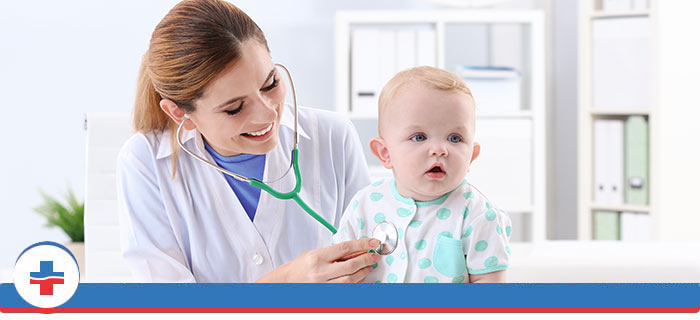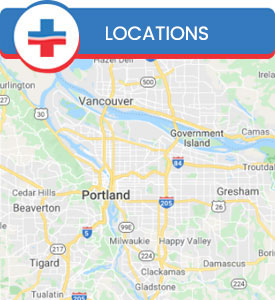Pediatric Abdominal Pain Treatment Q&A
Abdominal pain is a common childhood disease, symptoms include cramping, nausea, vomiting, diarrhea, constipation, gas, bloating, and loss of appetite, necessitating medical attention. Children can get affected by abdominal pain at any time. There can be various causes such as constipation, a food allergy or intolerance, food poisoning, gallstones, indigestion, or an upset stomach. Our specialists at Columbia Clinic Urgent Care are at your service. For more information, contact us or book an appointment online. We have convenient locations to serve you at Tibbetts St Portland, Stark Street Portland, and Tigard, OR. We also accept walk-ins.


Table of Contents:
How can I relieve abdomen pain?
What are the 3 types of abdominal pain?
When is abdominal pain serious?
What are the causes of abdominal pain in children?
It can be challenging to know how concerned you should be as a parent when your child experiences abdominal pain. The pain could be simple indigestion, or it could be a symptom of a more concerning illness. Below is helpful information on pediatric abdominal pain and what you can do when your child experiences it.
If your child is experiencing abdomen pain, there are some home remedies you can try to alleviate their pain. Here are some home remedies you can try to relieve your child’s abdomen pain:
● Encourage your child to drink plenty of fluids, offering them juice and water often to prevent dehydration
● Offer your child bland foods, such as applesauce, bananas, crackers, rice, or toast, but do not force them to eat if they feel too unwell
● Avoid giving your child spicy or greasy foods and carbonated beverages until symptoms have subsided for 48 hours
● Let them rest, especially after they’ve finished eating
● Suggest using the toilet, as their abdomen pain may resolve itself after a bowel movement
● Rub their tummy or find a distraction, such as reading a book or playing with toys
● Administer pain-relieving medication as recommended by their family doctor or pediatrician
There are many ways to describe or experience abdominal pain and it can be challenging to boil them down to three types. That said, doctors often categorize three types of abdominal pain visceral pain, parietal pain, and referred pain.
Visceral abdominal pain occurs when the nerves within the walls of organs and tissues in our abdomen get stretched, damaged, or injured. Visceral abdominal pain is not localized to a single area, and it is often characterized as a vague, dull, or cramping feeling. If the affected organ is hollow, the pain will likely be intermittent or colicky. On the other hand, the pain will likely be constant if the affected organ is solid. Some examples of conditions that cause visceral pain are irritable bowel syndrome (IBS), indigestion, appendicitis, or inflammation in the abdominal organs.
Parietal abdominal pain, also called somatic pain, is often sharp and localized to a central area. As such, it is sort of the opposite of visceral pain, in some ways. This type of pain occurs in the peritoneal lining that surrounds the abdominal cavity. Since the peritoneal lining has many nerve fibers, the pain with parietal abdominal pain is quite sharp. Conditions causing parietal abdominal pain include abscesses, injury to the peritoneal lining, tumors, or post-surgical pain.
Referred pain is when problems in one area of your body cause pain in another area of your body. For example, if your child experiences a thyroid condition like hypothyroidism, where their thyroid produces excess hormones, it can accelerate the digestive process and cause gut discomfort, diarrhea, and constipation. In such cases, the abdominal pain your child experiences are referred to as an original condition in another part of the body.
Some signs that abdominal pain is serious and requires immediate medical attention include:
● Abdominal swelling, characterized by a hard, rigid belly
● Bloody stools
● Burning sensation or pain with urination
● Difficulty breathing
● Excessive tenderness when you touch your child’s abdomen
● Extreme pain
● Fever
● Persistent nausea and vomiting, or if they are less than three months old and vomiting
● Weight loss
● Yellowish-looking skin
You should also seek immediate medical attention for your child if their abdominal pain is associated with a traumatic injury or accident, or if they also experience pressure or pain in their chest.
Here are some common causes of abdominal pain in children:
● Abdominal injury
● Acid reflux
● Anxiety or depression
● Constipation
● A food allergy or intolerance
● Food poisoning
● Gallstones
● Indigestion or upset stomach
● Mononucleosis
● Stomach flu, also known as gastroenteritis
● Strep throat
● Swallowed foreign bodies, such as coins
If you’re looking for quick answers to questions about your child’s abdominal pain, our medical team at Columbia Clinic Urgent Care can provide expert medical guidance and treatment and let you know how to properly care for your sick child. For more information, contact us or book an appointment online. We serve patients from Tibbetts St Portland, Milwaukie OR, Oak Grove OR, Stark Street Portland, Fairview OR, Happy Valley OR, Gladstone OR, Cedar Mill OR, Tibbetts Street Portland OR, West Linn OR, Aloha OR, Tigard OR, Lake Oswego OR, Tualatin OR, Oregon City OR.


